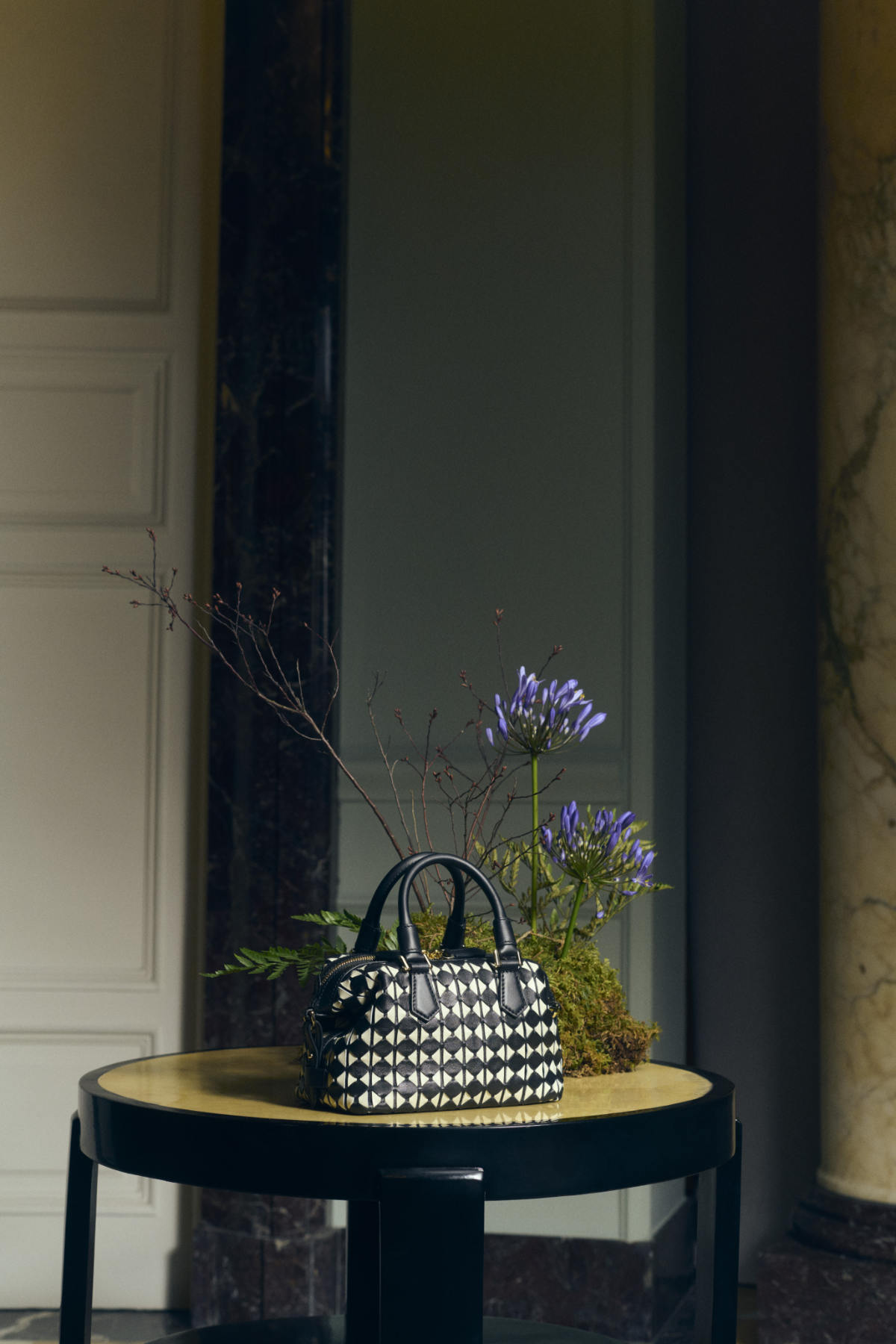Serapian Milano Brand
Serapian Presents Its New Autumn/Winter 2024 Collection
Luxferity, 06.09.2024

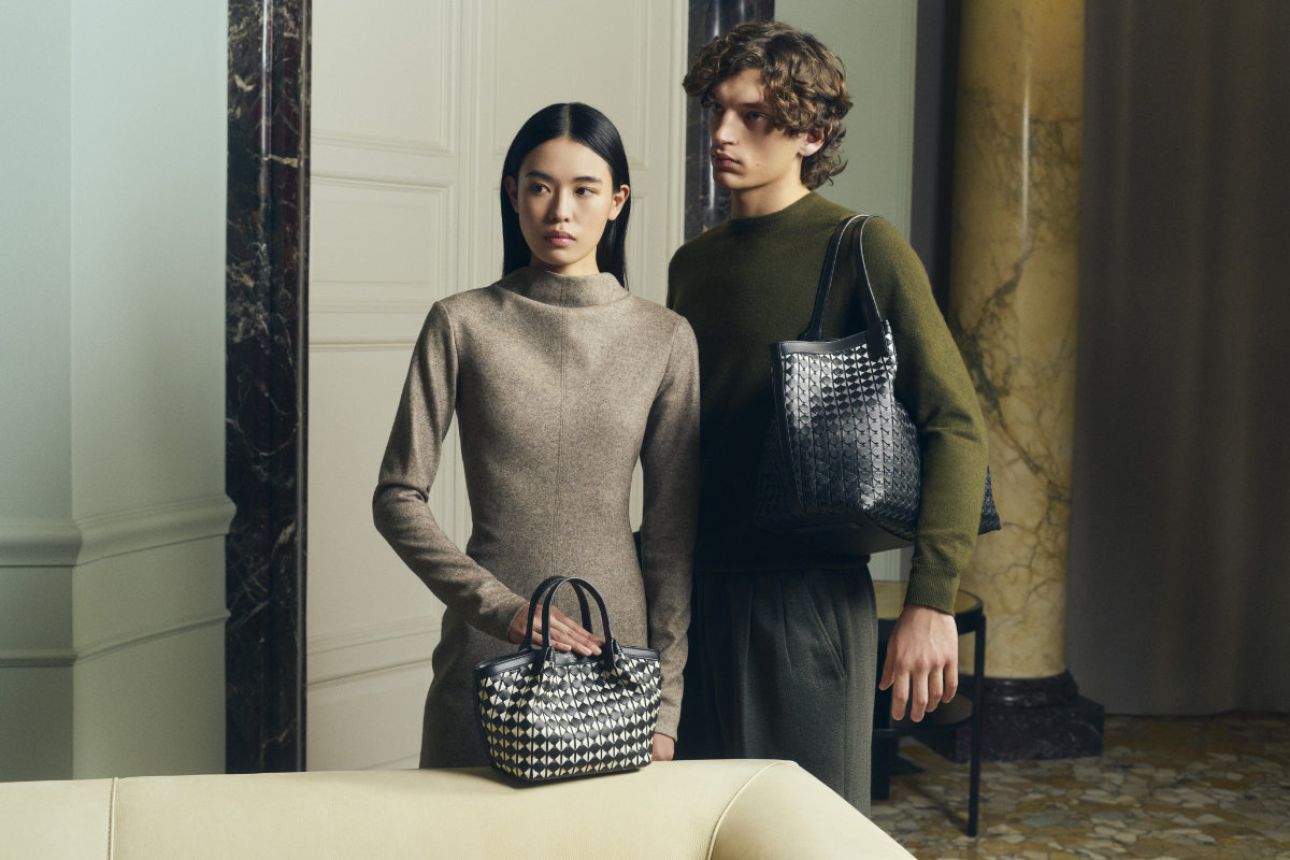
Serapian Autumn/Winter 2024 Collection
THE SERAPIAN MAISON
Founded by Stefano Serapian in 1928, Serapian is one of the oldest leather Maisons in Milan and still one of the city’s best-kept secrets.

Located in the centre of the Lombardy capital, the brand’s Bespoke Atelier is overseen by Giovanni Nodari Serapian, the third generation of the founding family. This unique destination is situated in Milan’s historic Art Deco gem, Villa Mozart. Bespoke sits at the heart of the Maison, and is the source of many of the designs that are introduced into the collections to this day.
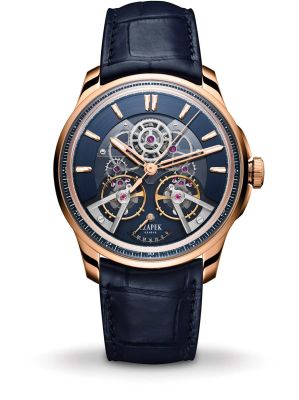
Complicité Harmony Blue

Serapian is known to the Milanese as a leather Maison with impeccable design and craft credentials. Throughout its history, Serapian has had close ties to artists and artisans, such as proto-surrealist Giorgio de Chirico and many from the world of architecture and furniture design. The bags are made for both men and women, taking the style of Serapian to heart, clutching or wearing their luxurious pieces to an opening night at La Scala, or for a stroll along Via Montenapoleone.
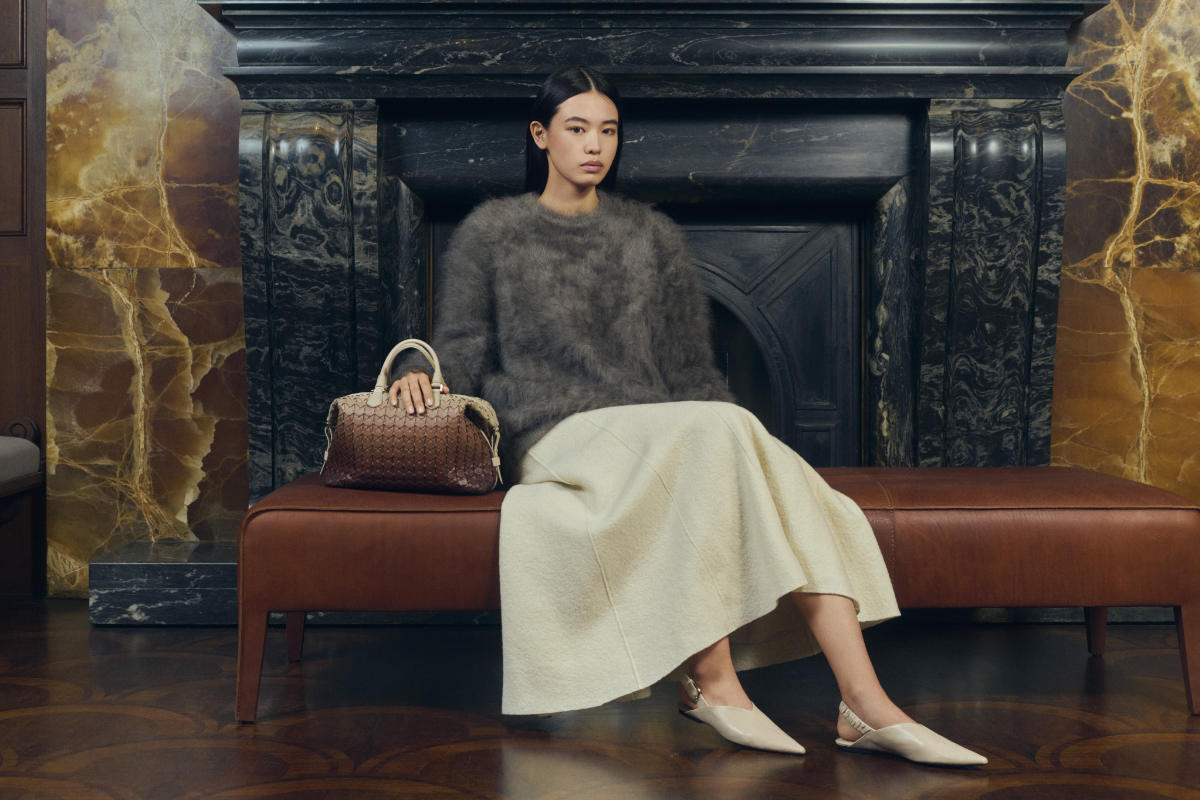
Serapian embodies the discreet and precise taste of the Milanese, where so much is left unsaid until you acquire the keys to the city. Behind the doors of seemingly austere façades you will find exquisite marble entrances, mosaics and gardens. Milan is truly a city of secrets, which is perhaps why Serapian’s most famous design is the Secret Bag, a style made bespoke for a customer who wanted a hidden pocket incorporated so she could keep something precious away from view. Rumour has it that this was for a photograph of her lover. Or his letters. We will never know.
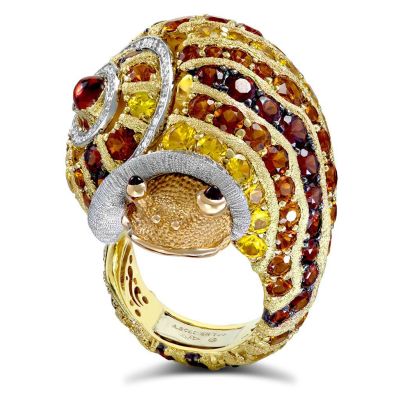
Gold & Platinum Sunny The Snail Ring

The signature appearance of Serapian bags is largely due to the Mosaico technique, first developed in 1947, a method of weaving strips of nappa leather less than a centimetre in width to create textured and coloured panels that have a fluid and lightweight look and feel. Indeed, it is a characteristic trait of Serapian that its pieces are extremely soft and unstructured.
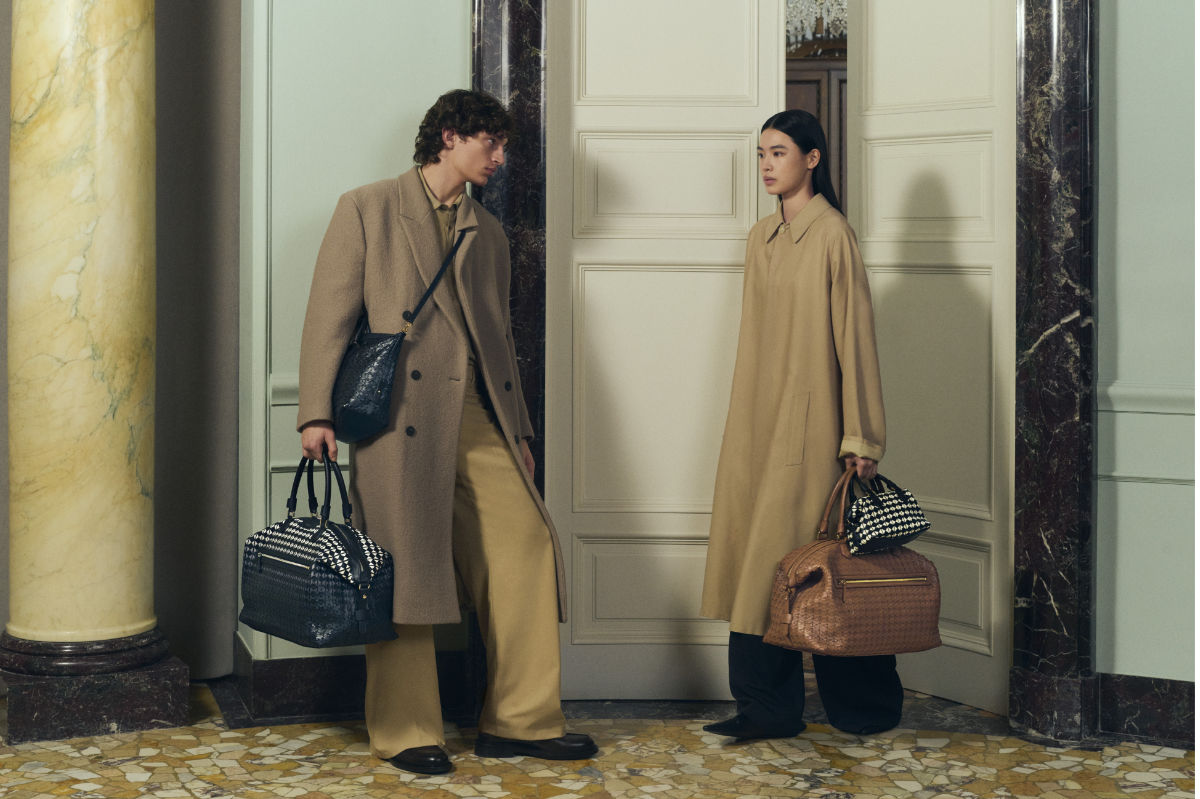
The strips used for Mosaico come in multiple colours and can be configured in all manner of patterns, from classic black and white to more vibrant geometrics. One execution in particular has become a speciality of the house: the creation of a dégradé effect, called chiaroscuro, which requires great skill in weaving leather to achieve a smooth and gradual change of tone from light to dark. Founder Stefano Serapian was fascinated by geometry and patternmaking, as is evidenced by his sketchbooks that are still housed at Villa Mozart.
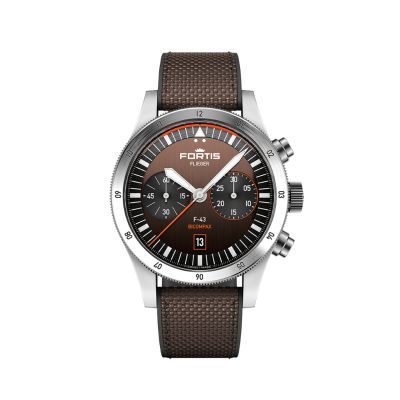
f-43 Bicompax Fratello Capsule Collection

A JOURNEY FROM MILAN TO TOKYO
This year, Serapian celebrates the opening of a flagship store in Japan’s capital. The space is designed to feel like an Italian villa in the heart of Ginza, created by Milanese artisans who have painted the walls and introduced mosaics and ceramics. There is a tasteful combination of contemporary and classic décor, paired in a way that is typical of Milan, which has always embraced the modern alongside the historical.
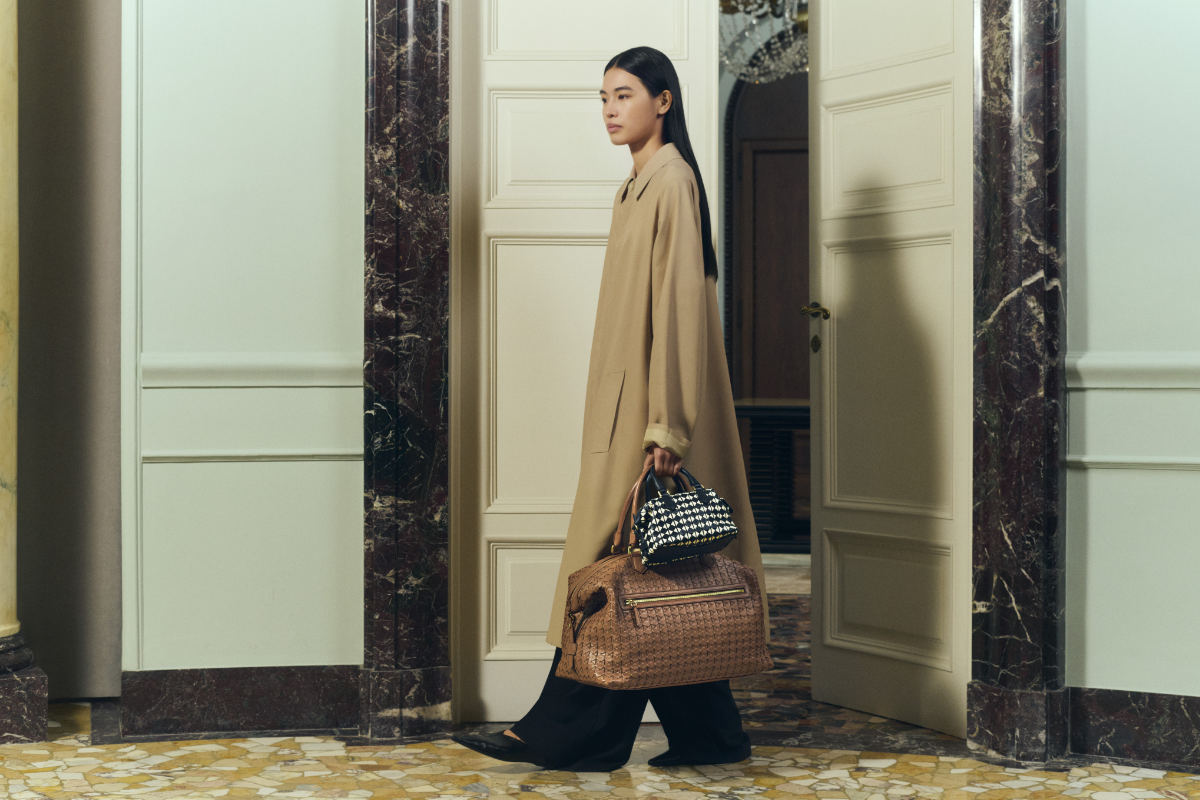
The connection between the two cities was explored during Milan fashion week at the presentation of Serapian’s Autumn/Winter collection at Villa Mozart.
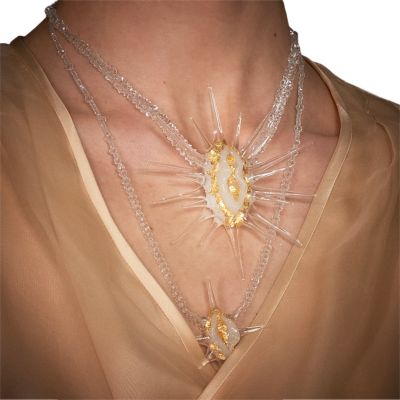
Pendant Jewel “L’Origine Du Monde”

Chiso, the oldest kimono-maker in Japan (established 1555 in Kyoto) has specially created three designs featuring “Oneiric Flowers” for this collection, fantastical blooms born from an imaginative marriage of Italian and Japanese flora. These adorn silk that is used as linings inside bags and a foulard on the outsides. A master painter from Chiso will be present showcasing his art live. This silk will be used to make a limited-edition collection of bags for the new Tokyo store – these designs will also be available as made-to-order commissions for customers elsewhere in the world.
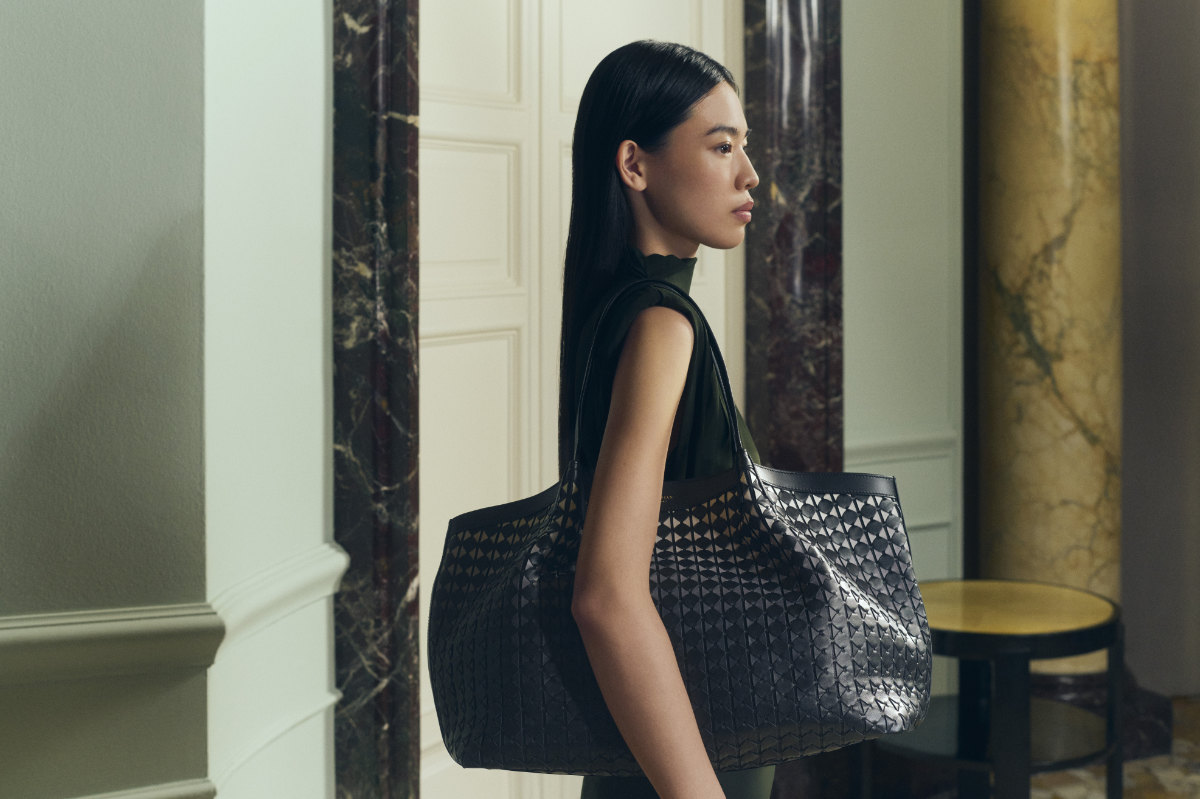
Villa Mozart itself, a remarkable example of the Art Deco style that stretched from Europe to the East around a century ago, is transformed through the eye of Satoshi Kawamoto. Born and raised in Japan, the artist dedicates his life to working with greenery and flowers across a wide range of genres. Now based in Milan, Kawamoto has taken the Villa’s garden as inspiration to create floral and foliage-based installations of Italian and Japanese plants and flowers within the Villa that bring the garden into the interior.

Solar Eclipse

The authentic Milanese style is also strongly represented in the Villa through the participation of Rossana Orlandi, who displays contemporary design pieces from her gallery in the space that are inspired by Japan. Furthermore, a Milanese architecture and design studio that specialises in working with recycled and reusable cardboard has made origami-inspired geometric display plinths to showcase the new collection of bags, many painted in a way that echoes the dégradé colouration of the Mosaico pieces.
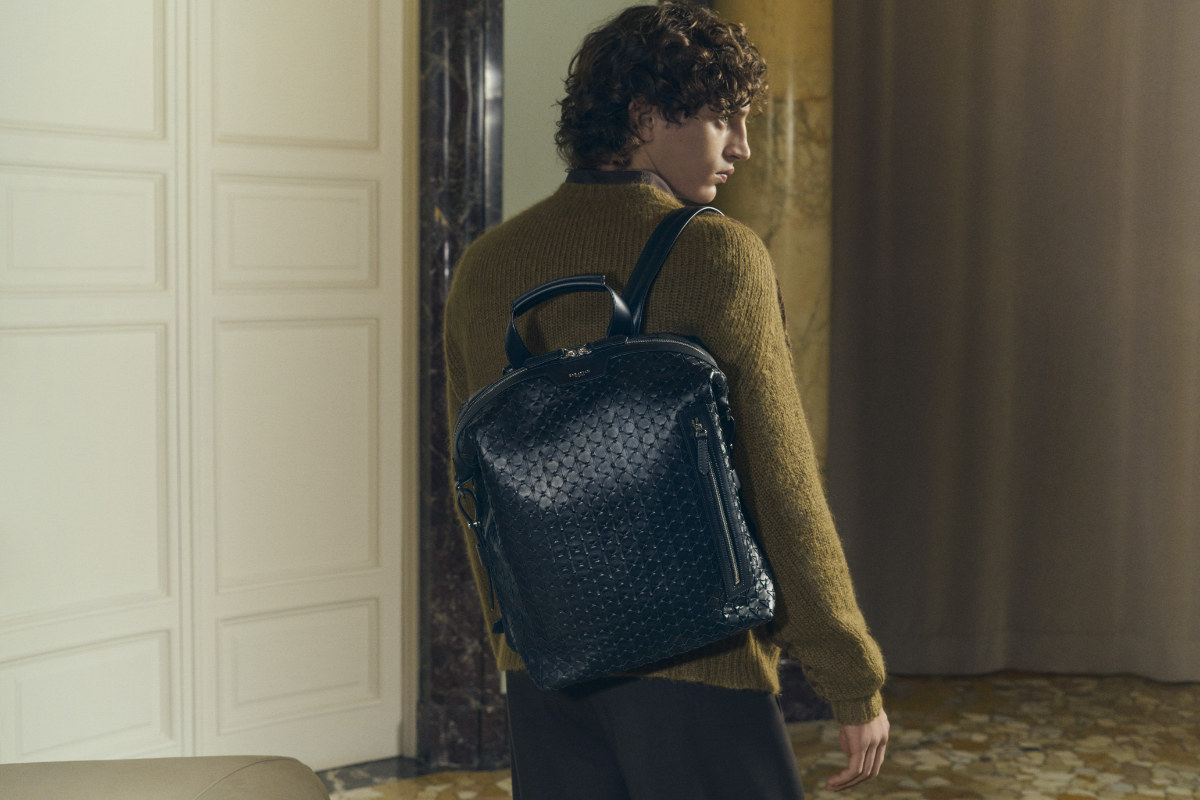
As well as the special bespoke creations incorporating silk, Serapian introduces a number of new pieces for Autumn/Winter 2024. A highlight is the Anì Bag, named after the wife of the founder’s son: an updated mini version of a bauletto travel bag that is part of the Maison’s archive. Subtle, elegant and folded at the sides to give a refined structure, like all Serapian bags the Anì is also eminently practical, perfect for those who are always on the go.
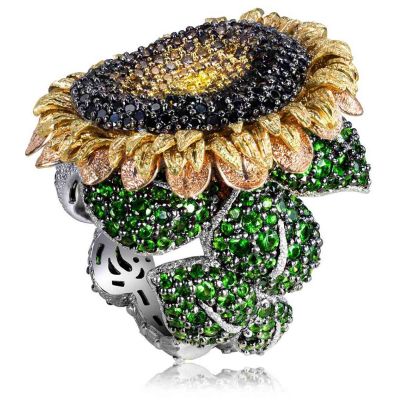
Gold Sunflower Ring With Color Diamonds

Other innovations include new dégradé Mosaico tones across different styes of bags, and a development of the Mosaico technique to incorporate a mix of materials: nappa and suede, nappa and exotic skins, and nappa and precious Italian wool.
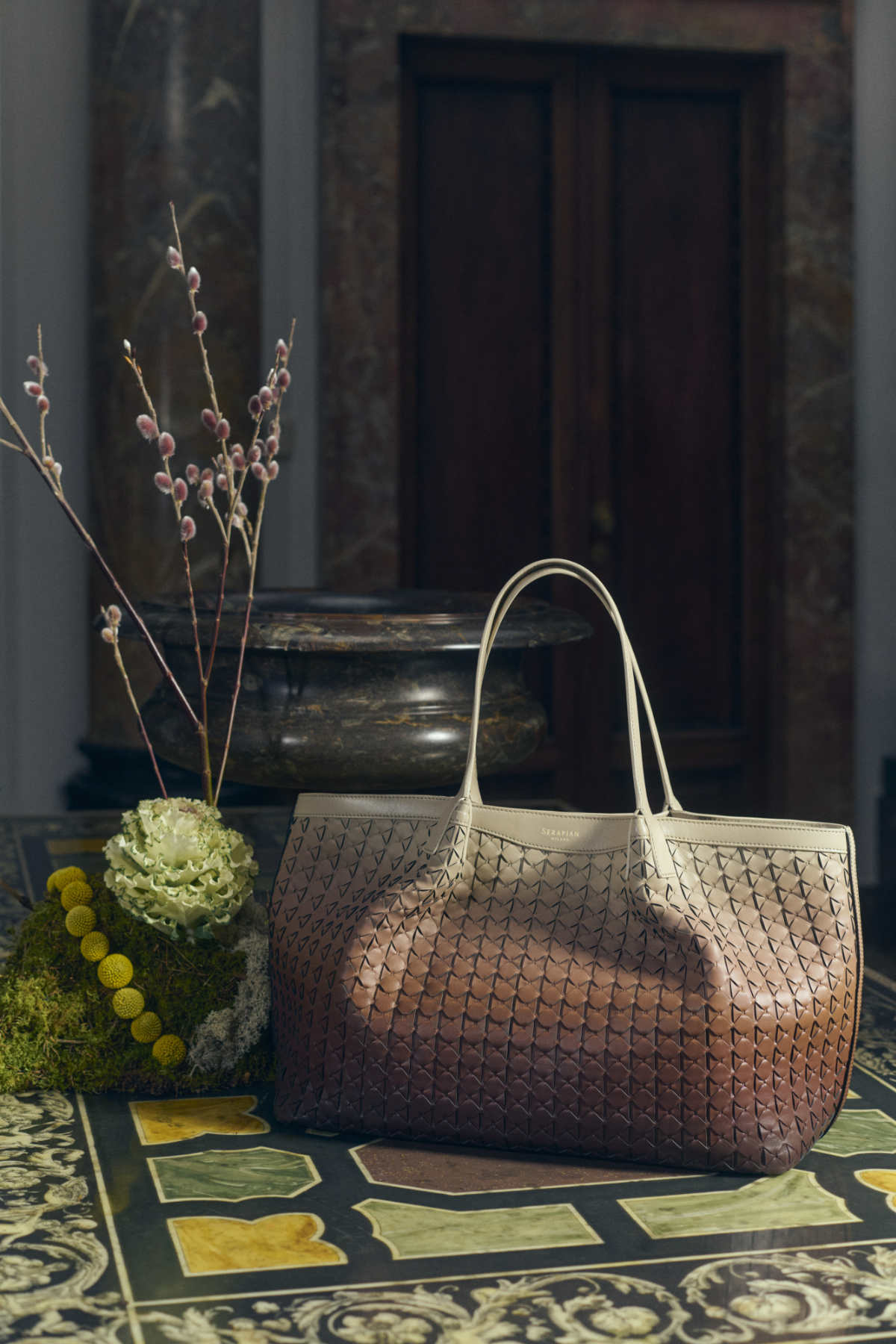
A marriage of handcraft and design, the Serapian bags for Autumn/Winter 2024 possess a distinctive appearance that does not rely on overt branding or logos. A Serapian on your arm is a quiet statement of sophisticated taste and says simply, “If you know, you know”.

Gold Cocktail Ring With Citrine & Tsavorites

